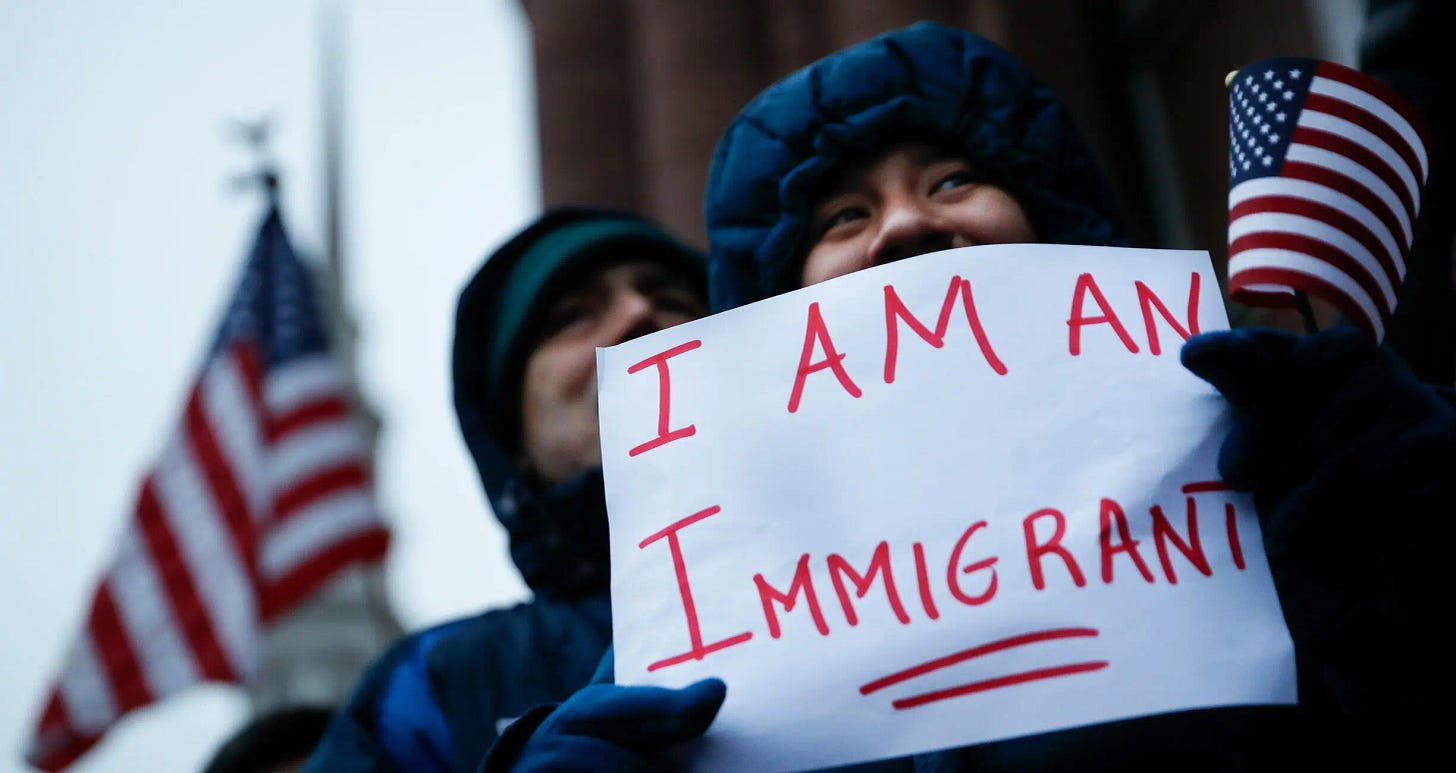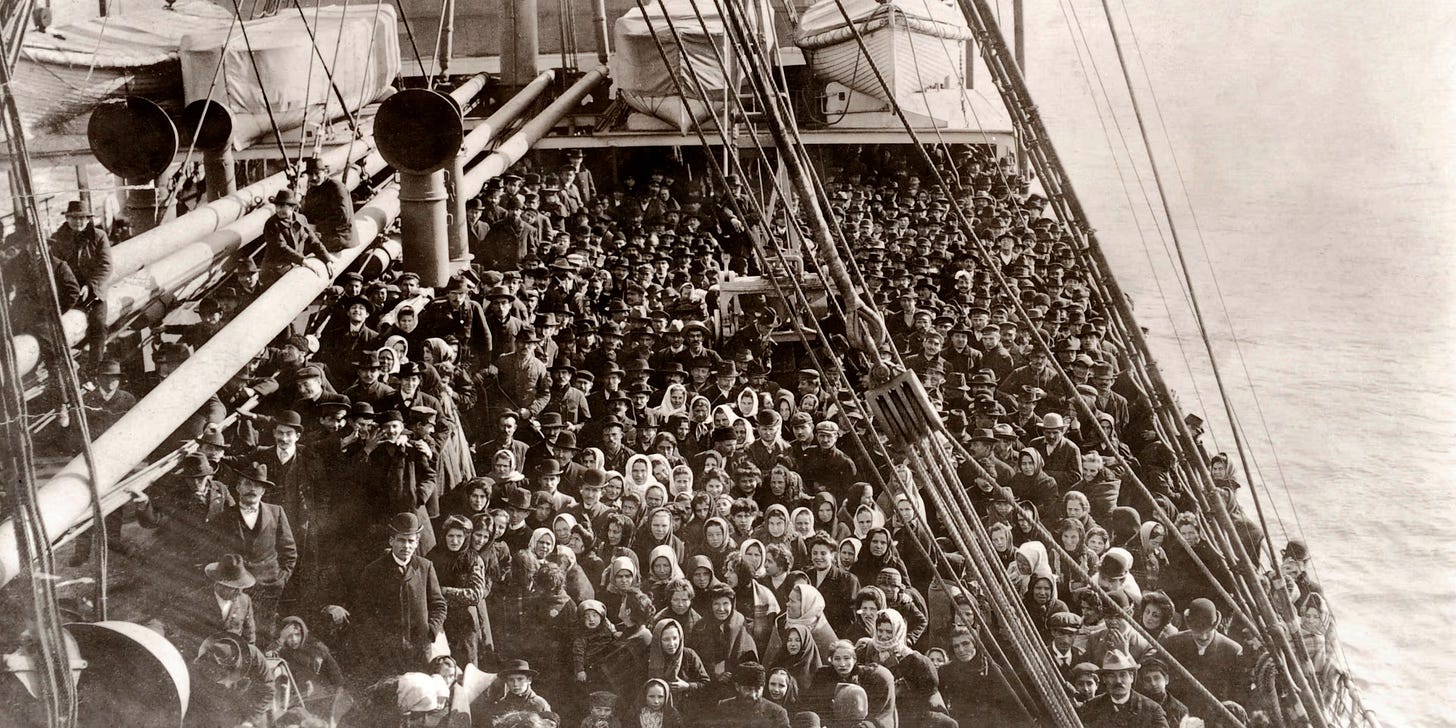The Melting Pot Was Always Lumpy: Reclaiming Heritage in the American Stew
Immigrant families have never experienced the melting pot as smooth or uniform.
For generations, Americans have been told that our country is a “melting pot”—a place where cultures dissolve into one homogenous whole. But that metaphor was never quite right. The American experience has always been more like a stew than a puree: the ingredients soften, blend, and influence one another, but they remain distinct. The carrots don’t become the potatoes, and the potatoes don’t become the broth. Instead, they simmer together, each contributing its flavor to the whole.
This isn’t just a historical observation. Today, as political forces openly attack diversity, equity, and inclusion (DEI) efforts and seek to scapegoat immigrants—especially the undocumented—we risk forgetting the real arc of immigration and assimilation in this country. The push toward cultural uniformity, often wrapped in fundamentalist rhetoric, is a dangerous misreading of what America has always been: a messy, lumpy, ever-evolving stew.
Immigrant families have never experienced the melting pot as smooth or uniform. The first generation often arrived with deep ties to their homelands. My own family’s American story began in 1910, when my grandfather—18 months old—came from Naples with his mother and grandfather. They fled poverty and earthquakes on the shoulder of Mount Vesuvius, hoping for a better life.
Like so many others, they settled in tight-knit communities. They spoke Italian, shopped at ethnic markets, sent money home, and prayed in familiar ways. My great-grandmother never learned English. For my mother’s side, that community was the Bronx—Arthur Avenue. America was the land of opportunity, yes—but it was also the land of intense pressure. To fit in. To survive. To prove you belonged.
I’ve gone through the census records and tracked the “Americanization” of our names. Pietro became Pete. Eleonora became Helen. After thirty years of records listing Naples as my grandfather’s birthplace, he claimed Brooklyn on his 1940 draft card. With World War II looming, it wasn’t safe to be seen as an Axis citizen.
The second generation often internalized this pressure. They dreamed of moving to the suburbs and becoming doctors, lawyers, and engineers. When I was a boy in New York around 1960, we still shopped on Arthur Avenue. Our doctor and dentist were Italian. Everyone felt safer with “their own kind.” But we also learned to hide what made us different. At school, a bologna sandwich on white bread felt safer than the leftovers of last night’s pasta. English took over the dinner table. Thanksgiving eclipsed the old-country holidays.
By the third generation, many traditions had faded. The family language was lost. Recipes became weekend projects, if they survived at all. Stories were dimly remembered. Some families tried to hold on to their heritage, but most let it quietly slip away. The stew kept simmering, and the edges of each ingredient softened. Children were named Hudson and Kimberly.
But something has changed in this current generation.
It struck me recently at the Multicultural Fair at my grandchildren’s school. It has become a beloved end-of-year event, and this year it had more tables and more pride than ever. Each group—representing countries as diverse as Norway, Pakistan, and Guatemala—offered food, stories, and traditions. My family ran a double table for Portugal and Italy. We shared recipes, stories, and a sense of identity. No one was less American for doing so—just more rooted.
In a time when cultural differences are being painted as threats or distractions, many young Americans are actively reclaiming what was lost. They’re learning the languages their grandparents stopped speaking. They’re cooking the meals their parents considered too ethnic. They’re researching family trees, taking DNA tests, and reviving forgotten holidays—not out of nostalgia, but as a declaration of identity.
This is not retro chic. It’s resistance.
A generation raised in the stew is now stirring the pot—with intention. They’re bringing to the surface what earlier generations tried to hide or forget. In a society that too often treats diversity as a problem to be solved, this reclamation of heritage is a quiet act of defiance—and a powerful reminder of what makes America rich and resilient.
The melting pot was never about erasing difference. That was the myth. Real American identity has always been forged through coexistence: sometimes uneasy, sometimes uneven, but always collective.
We are not a puree. We are a stew—lumpy, flavorful, and still cooking.
This was a guest post by Peter Horan who is a California native, investor, and has over 25 years of experience in digital media.




